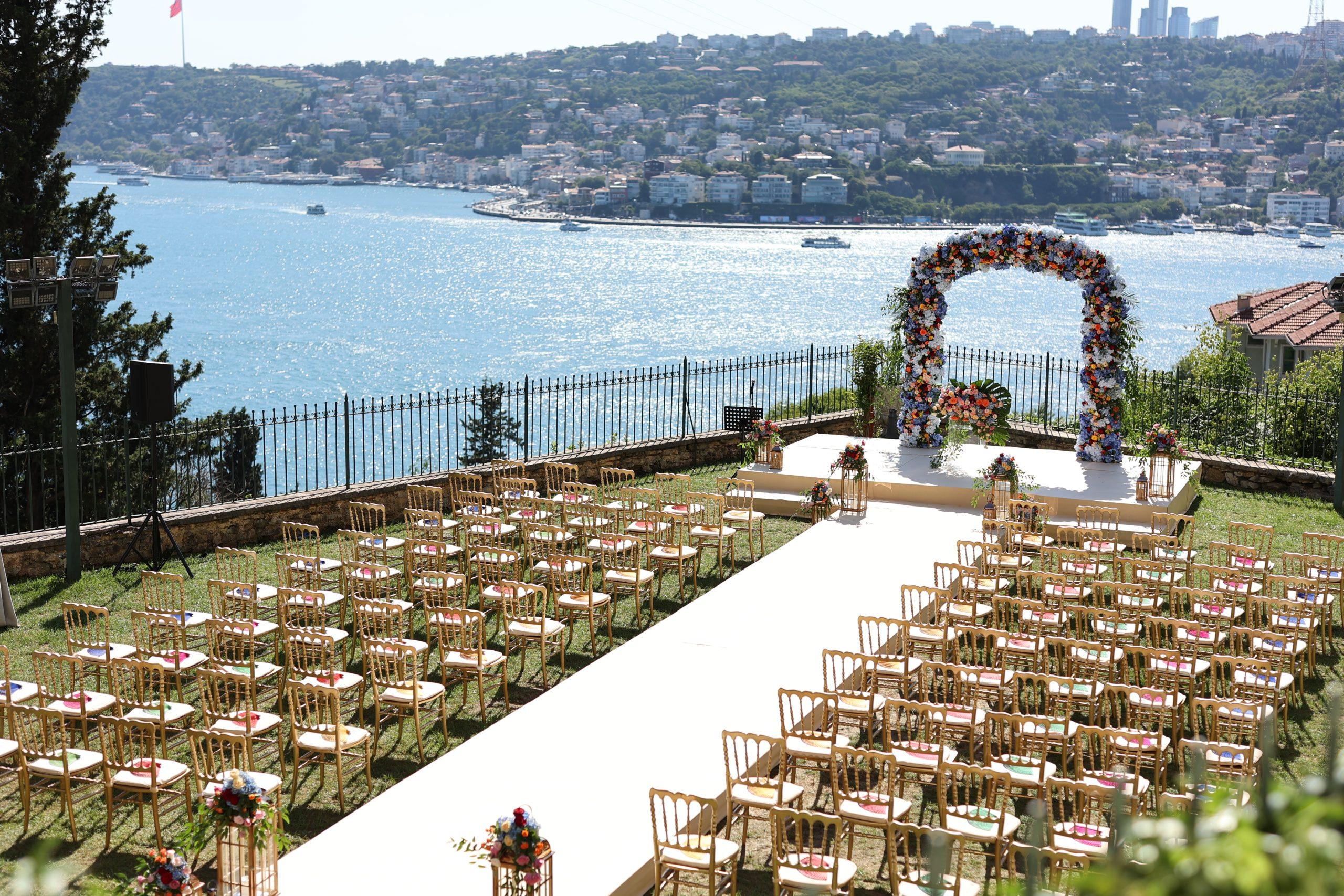
ORGANIZATION PLANNING
The first rule is that the service quality is high. Even if it is a wedding with the most beautiful decoration, if the service is bad, the food is cold, and the waiters are rude, there is no point in organizing that event. The second is the harmony of the working team, I mean the 5 stages I just mentioned. And of course, it is extremely important for the bride and groom to be positive. Their excitement reflects on me, my team and all the guests, and the wedding goes so well. When the couple’s excitement reflects on me, I can often add a lot of things that are not in the contract. Because from that moment on, everything must be perfect as it will be my signature.

Planning an impressive and unforgettable event requires meticulous planning and a detailed organizational process. We follow the steps below to create a successful organizational plan.
1. Goal Setting:
- What is the purpose of your event? Are you looking to raise awareness, increase sales, bring a community together, or have another goal?
- Who is your target audience? What are the demographics, interests, and expectations of the participants?
- What do you want to achieve from the event? It is important to set specific and measurable goals.
2. Budgeting:
- How much money can you spend on the event? Identify income and expense items in detail.
- Remember to allocate a portion of the budget for unexpected expenses.
- Creating a realistic budget will help you avoid financial difficulties and use your resources effectively.
3. Date and Venue Selection:
- Choose a suitable date considering the availability of your target audience and the theme of the event.
- Make sure the venue’s capacity is appropriate for the number of participants.
- Consider factors such as transportation, accommodation, and parking.
4. Program and Activities:
- Prepare a program that will attract and motivate your target audience.
- You can include various presentations, workshops, panels, and entertainment activities.
- Be sure to leave some flexibility in the program considering time management.
5. Promotion and Marketing:
- Promote the event through different channels. Utilize social media, email, press releases, and posters.
- Determine the most suitable promotion strategy for your target audience.
- Creating an event website or registration platform can keep participants engaged.
6. Registration and Attendance:
- Facilitate the registration process for participants. Offer options such as online registration platforms or manual registration methods.
- Keep track of the participant list and contact information systematically.
- Encourage participation by sending confirmation emails and reminders.
7. Logistics and Details:
- Plan logistical details such as sound and visual systems, catering, and transportation.
- Take necessary precautions to avoid any disruptions.
- Ensure coordination and communication among the assigned personnel.
- Don’t forget to prepare a contingency plan.
8. Evaluation and Feedback:
- Collect feedback from participants after the event. Learn the positive and negative aspects of the event through surveys, comments, and evaluations.
- Use the data you obtain to improve your plans and strategies for future organizations.
By following this guide throughout the event planning process and completing each step meticulously, you can create a memorable event.




